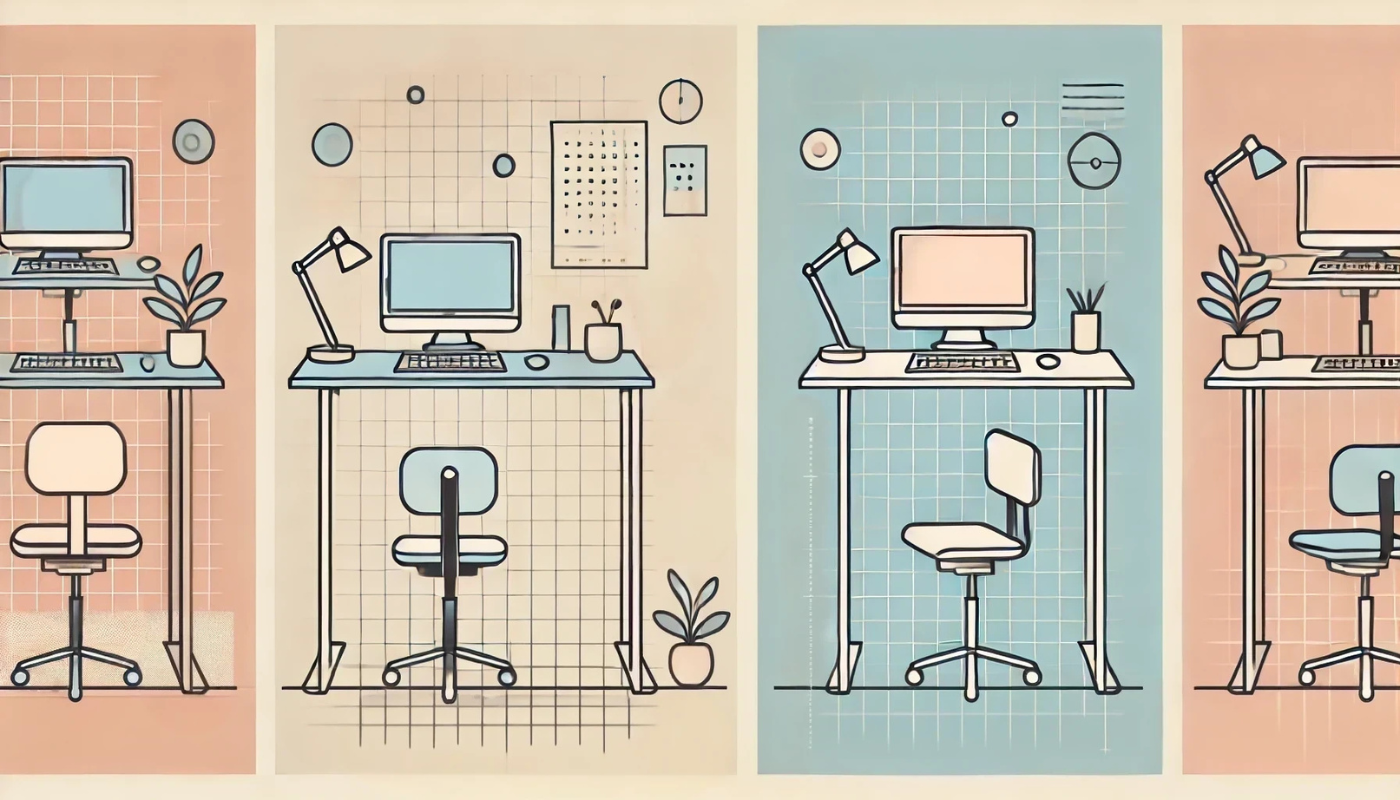Choosing between standing and sitting while working can significantly impact your health. Here’s what you need to know to make an informed decision:
Quick Comparison:
| Feature | Sitting | Standing Desk |
|---|---|---|
| Calorie Burn | Low | Higher |
| Posture | May Encourage Slouching | Promotes Better Alignment |
| Back Pain Risk | Higher | Lower |
| Energy Levels | May Decrease | May Increase |
| Leg and Foot Comfort | Comfortable | Can Cause Fatigue |
Key Concepts
Understanding the health implications of prolonged sitting and standing is crucial for optimizing your workspace.
The Impact of Prolonged Sitting
Extended periods of sitting have been linked to several health issues:
- Increased Risk of Obesity: Sitting burns fewer calories, potentially leading to weight gain.
- Heart Disease: Sedentary behavior is associated with higher risk of cardiovascular problems.
- Type 2 Diabetes: Prolonged sitting can affect insulin sensitivity.
- Poor Posture: Can lead to musculoskeletal disorders and chronic back pain.
Benefits and Challenges of Standing Desks
Standing desks offer potential health benefits but also come with challenges:
Benefits:
- Increased Calorie Expenditure: Standing burns more calories than sitting.
- Improved Posture: Encourages an upright spine and engages core muscles.
- Reduced Back Pain: May alleviate discomfort associated with prolonged sitting.
Challenges:
- Leg and Foot Discomfort: Prolonged standing can lead to fatigue and soreness.
- Risk of Varicose Veins: Standing for long periods may increase this risk.
- Adjustment Period: May take time to adapt to standing while working.
Pros and Cons
Sitting
Pros:
- Comfortable for Extended Periods: Less strain on legs and feet.
- Better for Detailed Tasks: Stability can aid fine motor skills.
- Easier Ergonomic Setup: Simpler to adjust chair and desk height.
Cons:
- Health Risks: Associated with obesity, heart disease, and diabetes.
- Poor Posture Habits: Can lead to slouching and spinal issues.
- Reduced Calorie Burn: Minimal energy expenditure.
Standing Desk
Pros:
- Enhanced Calorie Burn: Increases energy expenditure slightly.
- Promotes Active Posture: Encourages movement and muscle engagement.
- May Improve Focus: Standing can increase alertness for some individuals.
Cons:
- Physical Discomfort: Potential for leg, foot, and back fatigue.
- Ergonomic Challenges: Requires proper setup to avoid strain.
- Not Suitable for All Tasks: May be difficult for intensive typing or detailed work.
Expert Opinions
Dr. James Levine, a professor of medicine at the Mayo Clinic, states:
“Sitting is the new smoking. Prolonged sitting is associated with a higher risk of heart disease, diabetes, and premature death.”
Ergonomics expert Alan Hedge from Cornell University mentions:
“Alternating between sitting and standing is the key. It’s not healthy to do either one all day long.”
Factors to Consider
Calorie Expenditure
- Sitting: Burns approximately 60–130 calories per hour.
- Standing: Burns about 100–200 calories per hour.
Note: The difference over a workday can add up, but it’s not a substitute for regular exercise.
Posture and Musculoskeletal Health
- Sitting: May lead to slouching, causing back and neck pain.
- Standing: Encourages upright posture but can strain legs if standing too long.
Energy and Productivity
- Sitting: May feel more comfortable, potentially aiding focus.
- Standing: Can increase alertness but may cause discomfort over time.
Health Risks
- Sitting: Linked to obesity, metabolic syndrome, and increased mortality risk.
- Standing: Prolonged standing can lead to circulatory issues and joint problems.
Tips for Optimal Health
- Alternate Positions: Use an adjustable desk to switch between sitting and standing every 30 minutes.
- Ergonomic Setup: Ensure your desk and screen height support good posture whether sitting or standing.
- Use Supportive Equipment: Anti-fatigue mats and supportive footwear can reduce discomfort while standing.
- Stay Active: Incorporate short walks or stretches into your routine to promote circulation.
- Listen to Your Body: Pay attention to signs of discomfort and adjust accordingly.
Conclusion
Both sitting and standing desks have advantages and drawbacks. The optimal approach is to balance between the two, tailoring your work environment to your personal comfort and health needs. By alternating positions and maintaining proper ergonomics, you can mitigate health risks and enhance your well-being.
Frequently Asked Questions
Is it better to stand all day instead of sitting?
Standing all day can lead to its own set of health issues, such as leg fatigue and varicose veins. A combination of sitting and standing is recommended.
How often should I switch between sitting and standing?
Experts suggest changing positions every 30 minutes to an hour to promote circulation and reduce strain.
Do standing desks help with weight loss?
While standing burns more calories than sitting, the difference is modest. Standing desks can contribute to a more active lifestyle but are not a sole solution for weight loss.
Can a standing desk improve my posture?
Yes, standing desks can encourage better posture, but it’s important to maintain proper alignment and ergonomics.
What are some alternatives if I can’t get a standing desk?
Consider using a desk converter, taking regular breaks to stand and move, or using a stability ball chair to engage core muscles while sitting.
